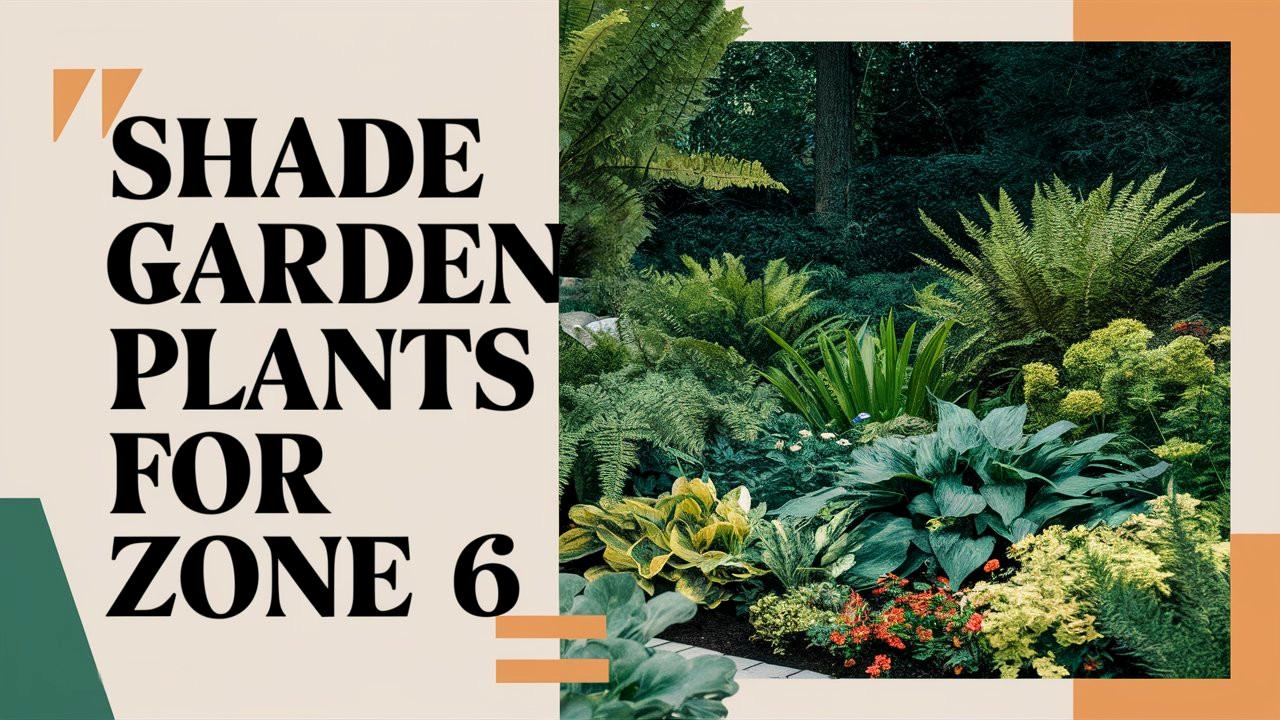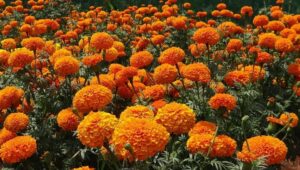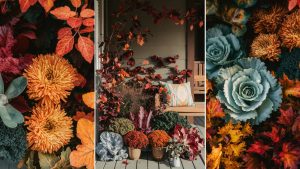Welcome to the world of gardening! If you live in Zone 6, you have a lovely opportunity to create a stunning shade garden full of unique and vibrant plants. This post will guide you through some of the best plants suited for shade in your zone, providing you with excellent options to cultivate an enchanting and tranquil outdoor space.
Bear’s Breeches (Acanthus mollis)
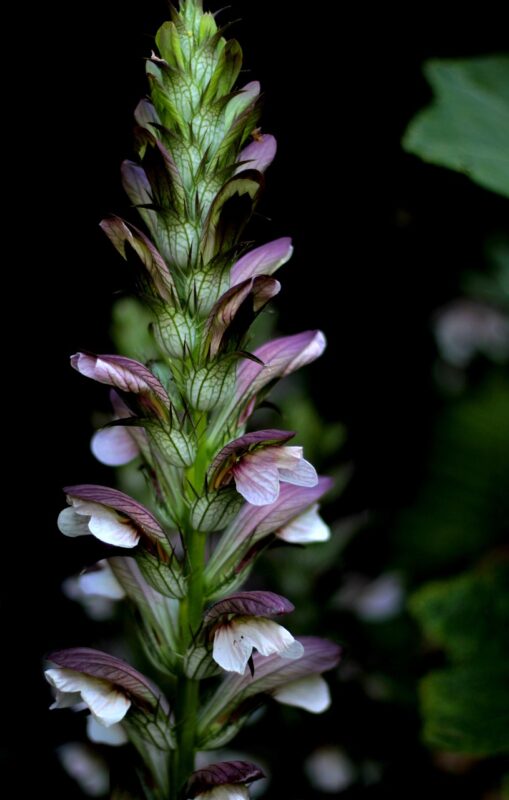
Bear’s Breeches is an attractive perennial known for its bold architectural leaves and striking flower spikes that rise high above the foliage. This plant is a great choice for those looking to add a dramatic touch to their shade garden. The leaves can reach up to three feet tall and, in summer, produce tall spikes adorned with white to purple flowers. Bear’s Breeches thrives in rich, well-drained soil and prefers a location where it can receive partial to full shade.
This plant is not just a stunning visual, but it’s also a reliable performer in your garden. It’s relatively low-maintenance, requiring minimal watering once established. It is perfect for creating an impressive backdrop in your shade garden, drawing the eye with its unique form.
Bleeding Heart (Dicentra spectabilis)
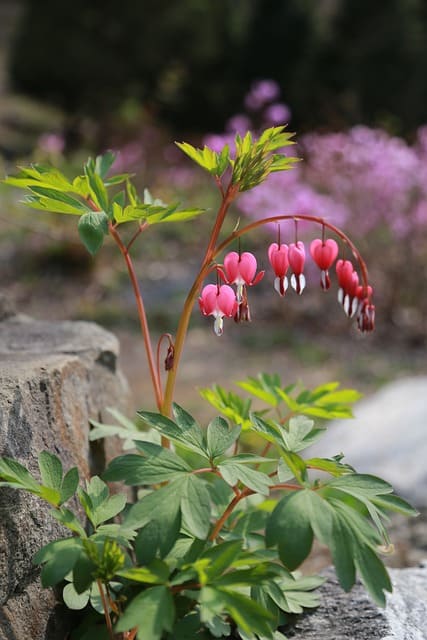
Bleeding Heart is a classic shade garden favorite, famous for its heart-shaped pink and white flowers that dangle delicately from arching stems. In moderate shade, this perennial can produce blooms in early spring, creating a romantic atmosphere in your garden. Its fern-like foliage complements the flowers beautifully, providing lush greenery throughout the growing season.
Bleeding Heart prefers consistently moist, well-drained soil, making it an excellent choice for shaded areas that retain moisture. The blooms can attract pollinators such as bees and butterflies, making this plant both beautiful and beneficial for your local ecosystem.
Blue Angel Hosta (Hosta ‘Blue Angel’)
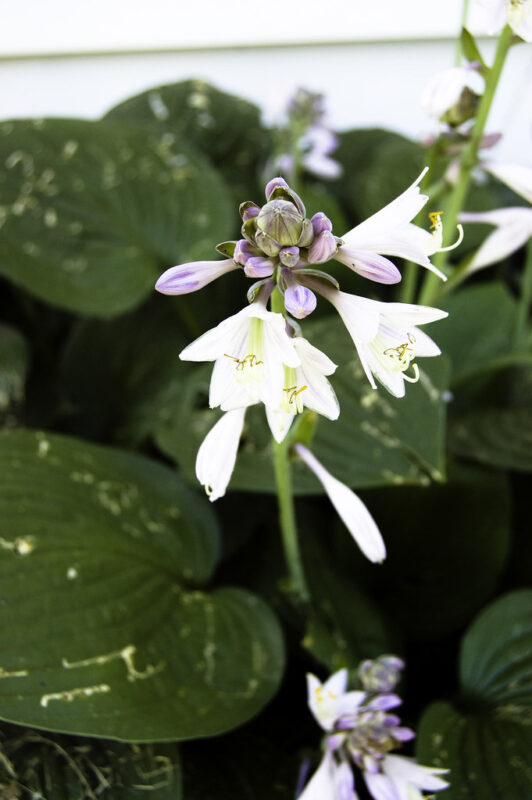
The Blue Angel Hosta is a standout in the shade garden, known for its large, blue-green leaves that can grow to be quite substantial. This plant is a real winner for its striking foliage that remains attractive throughout the summer months. In late summer, tall spikes of lavender flowers add an extra layer of interest.
This Hosta thrives in a site with partial to full shade and well-drained soil enriched with organic matter. With its robust size and presence, it can act as a fantastic focal point in your garden bed or a sumptuous backdrop for smaller shade plants. Plus, its low maintenance requirements make it perfect for beginners.
Columbine (Aquilegia)
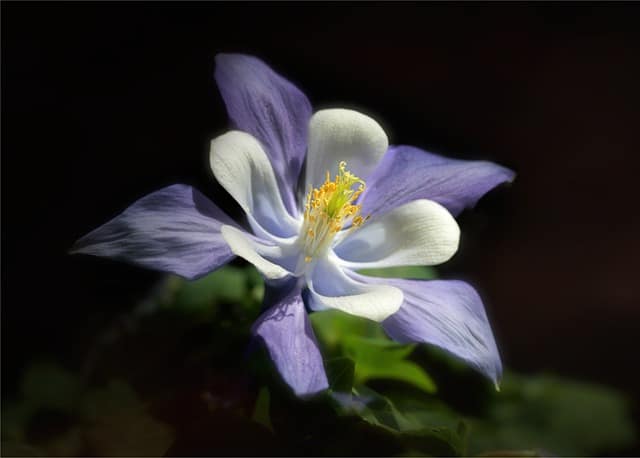
Columbine is a whimsical perennial that brings a splash of color and charm to shaded areas. With its uniquely shaped flowers that come in various colors—from blues and purples to yellows and whites—Columbine can create a magical garden atmosphere. This plant’s tubular flowers are loved by pollinators, including hummingbirds.
Columbine flourishes in well-drained soil and partial shade, adapting well to a variety of soil types. It’s a short-lived perennial but self-seeds easily, ensuring your garden remains colorful for years to come. This lovely flower is perfect for those who want to see vibrant colors spring to life in their shaded space!
Coral Bells (Heuchera)
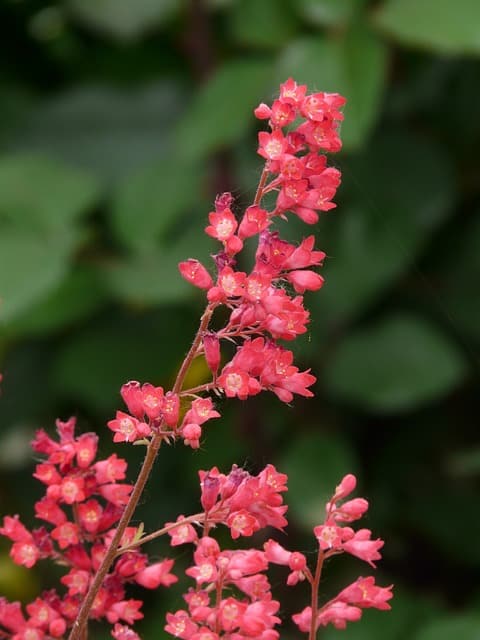
Coral Bells are gaining popularity for their stunning foliage, which comes in a variety of colors, including deep plum, bright green, and vivid red. Besides their attractive leaves, these plants also produce charming flower spikes in late spring that attract pollinators, making them a wonderful addition to your shade garden.
Thriving in well-drained, fertile soil, Coral Bells prefer partial shade to full shade. These plants are versatile, doing well in borders, containers, or as ground cover. As a bonus, they are relatively low-maintenance and deer-resistant, making them suitable for any gardener—especially beginners looking for easy-care options.
Corydalis (Corydalis lutea)
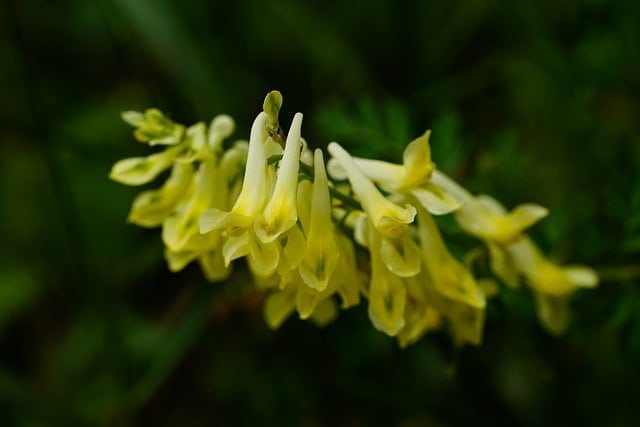
Corydalis is a charming perennial that adds delicate, fern-like foliage to your shade garden. This plant produces clusters of bright yellow flowers throughout the spring and into the summer, enhancing the ambiance of any shady nook. It’s particularly attractive when intermingled with other plants, creating a lush and layered look.
Corydalis thrives in well-drained soil and prefers partial shade, but it can also tolerate full shade. This plant is ideal for those wanting to add a touch of light to darker areas of the garden. Not only does it look lovely, but it also attracts butterflies, adding movement and life to your space.
Country & Western Astilbe (Astilbe chinensis ‘Country & Western’)
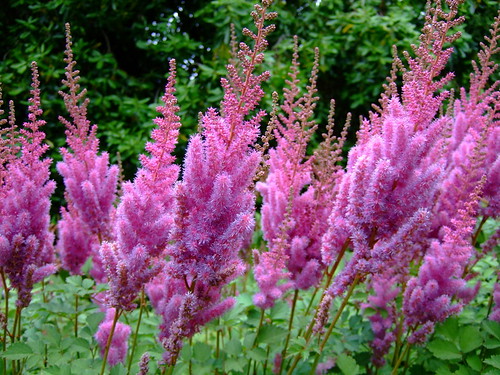
Astilbes are renowned for their feathery, plume-like flowers that bloom in a variety of colors, including shades of pink, red, and white. The Country & Western variety is particularly loved for its vigorous growth and bright blooms that rise above glossy green foliage in early to mid-summer.
This perennial thrives in moist, well-drained soil and partial to full shade, making it perfect for those tricky darker spots in your yard. Astilbes are great for creating a soft and romantic feel in the garden. Their blooms can persist well into the fall, providing visual interest even as other plants wane.
Creeping Myrtle (Vinca minor)
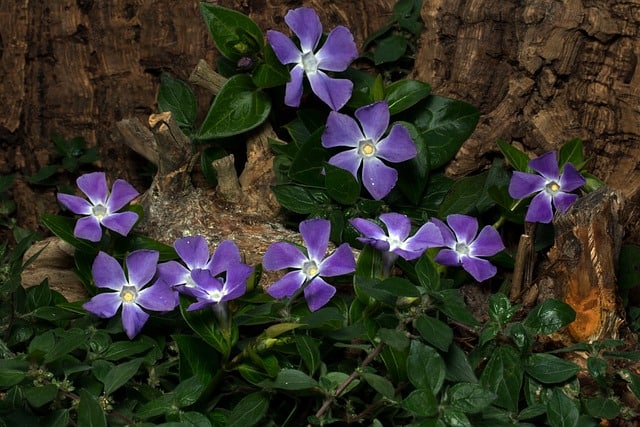
If you’re looking for a dependable ground cover for your shady areas, look no further than Creeping Myrtle, also known as periwinkle. This evergreen plant produces enchanting purple-blue flowers in the spring, covering the ground with a carpet of glossy leaves. It’s ideal for controlling erosion and filling in open spaces beneath trees.
Creeping Myrtle does well in both partial and full shade, thriving in various soil conditions, but it prefers well-drained areas. Once established, it requires minimal maintenance, making it an excellent choice for beginners. Its lush greenery and lovely flowers will create a soothing and inviting atmosphere in your garden.
English Daisies (Bellis perennis)
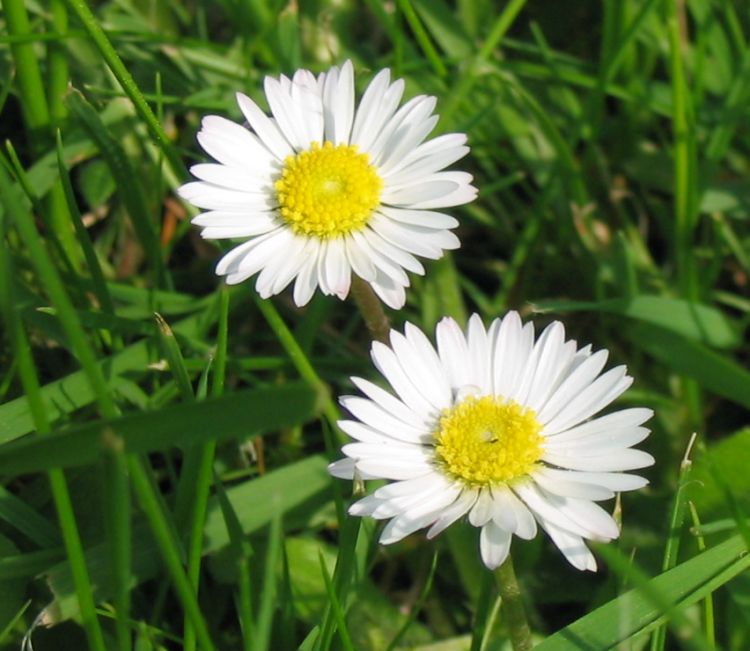
English Daisies are charming perennials that add a delightful touch of whimsy to any shade garden. Known for their classic white and yellow flowers, these daisies bloom in spring and may continue to flower into the summer, bringing cheer to your low-light areas.
These plants prefer well-drained soil and can tolerate partial shade, making them very versatile. What’s more, they self-seed easily, meaning they can thrive in your garden with minimal effort from you. These daisies are perfect for those looking to add a touch of quaint beauty to their outdoor space.
Ferns
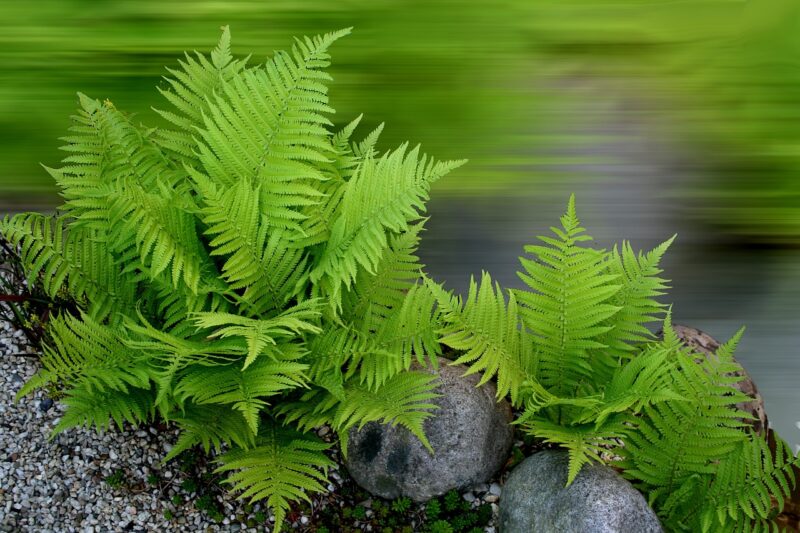
Ferns are an ideal choice for shade gardens, offering an elegant, textured backdrop with their lush fronds. With a wide variety of species to choose from, such as the delicate Lady Fern or the robust Ostrich Fern, you are sure to find the perfect type to suit your garden’s aesthetic.
Ferns thrive in moist, well-drained soil and enjoy a spot with dappled sunlight or full shade. They require little maintenance, and some varieties even provide beautiful autumn colors, enhancing the garden’s appeal even further. These plants can easily fill in gaps amongst your other shade-loving plants, creating a dense, verdant environment.
Foam Flowers (Tiarella cordifolia)
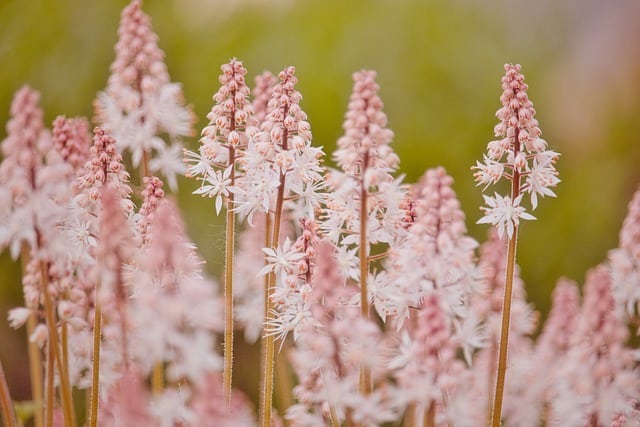
Foam Flowers are a delightful addition to your shade garden, known for their charming, frothy flower spikes that bloom in spring. These unique plants produce delicate white, pink, or purple flowers on sturdy stems above lobed foliage, creating a lovely display against lush green backgrounds.
Thriving in well-drained soil with partial to full shade, Foam Flowers make excellent ground cover, spreading gently while retaining their attractive foliage throughout the growing season. They are perfect for those seeking to add visual intrigue to shaded areas without overwhelming the landscape with their growth.
Hosta (Hosta spp.)
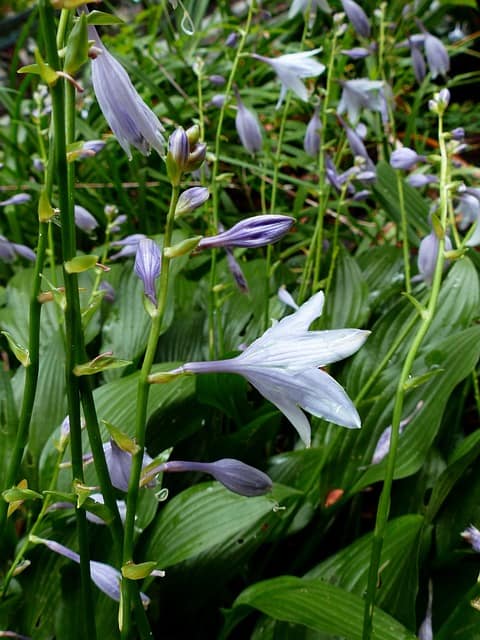
Hostas are the champions of shade gardens, renowned for their stunning foliage and unbeatable beguiling variety. With hundreds of species and cultivars available, you can find Hostas with leaves that vary in color, shape, and size—from deep greens to bright golds, and from small to massive.
These versatile plants thrive in rich, well-drained soil, preferring dappled sunlight or full shade. Hostas are excellent for planting among other shade plants, providing a beautiful contrast throughout the growing season. Their low-maintenance nature makes them a favorite among beginners and seasoned gardeners alike!
Jack Frost Brunnera (Brunnera macrophylla ‘Jack Frost’)
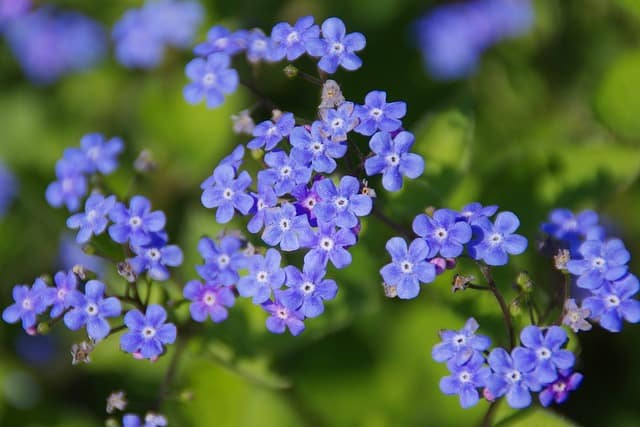
Jack Frost Brunnera is a stunning perennial that stands out with its beautiful silver leaves marked with green veining. In spring, this plant produces clusters of small, blue forget-me-not-like flowers, providing a charming pop of color in your shade garden.
This plant prefers moist, well-drained soil and thrives best in dappled to full shade. With its striking foliage and lovely blooms, Jack Frost Brunnera can make a beautiful addition to any garden. It’s a great choice for beginners looking to add visual interest and unique texture to shaded areas.
Japanese Spurge (Pachysandra terminalis)
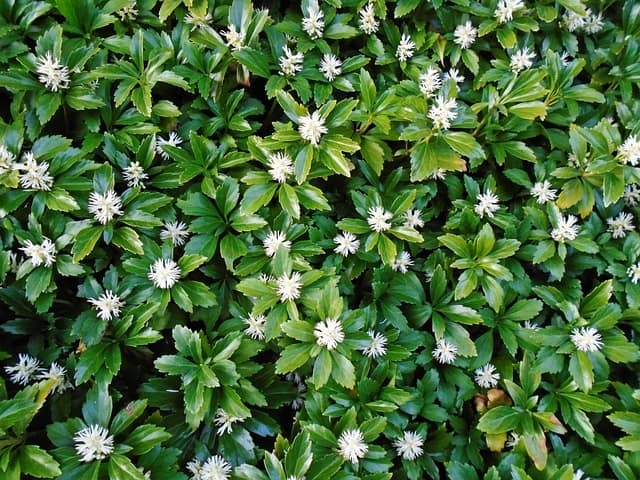
Japanese Spurge is an excellent evergreen ground cover that thrives in shaded environments, making it a perfect solution for difficult spots in your garden. Its glossy leaves provide year-round greenery and, in the spring, the plant produces delicate, white flower spikes.
This hardy perennial prefers rich, moist soil but can adapt well to various conditions. Once established, Japanese Spurge requires minimal maintenance, making it suitable for novice gardeners. Its ability to suppress weeds while filling bare spots makes it an intelligent choice for a low-maintenance shade garden.
Japanese Toad Lily (Tricyrtis hirta)
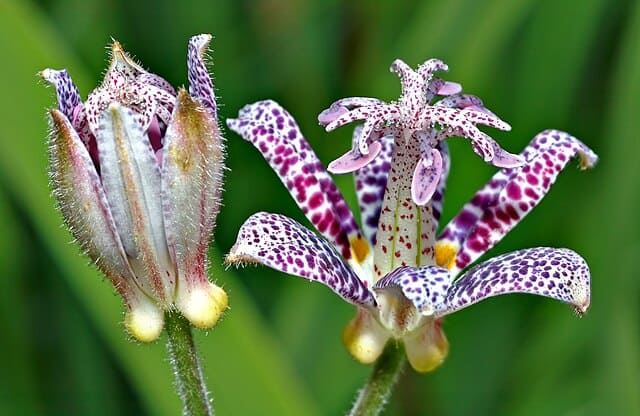
The Japanese Toad Lily is an intriguing perennial that adds an exotic touch to shade gardens with its unique, speckled flowers that bloom in late summer. Resembling orchids, these intricate flowers come in various colors, including purples and whites, adding unexpected interest in the later part of the growing season.
This plant prefers well-drained soil and partial to full shade, thriving best in woodland gardens. Since it blooms at a time when many other plants have finished flowering, the Toad Lily can keep your garden looking vibrant and alive even as autumn approaches.
Lenten Rose (Helleborus orientalis)
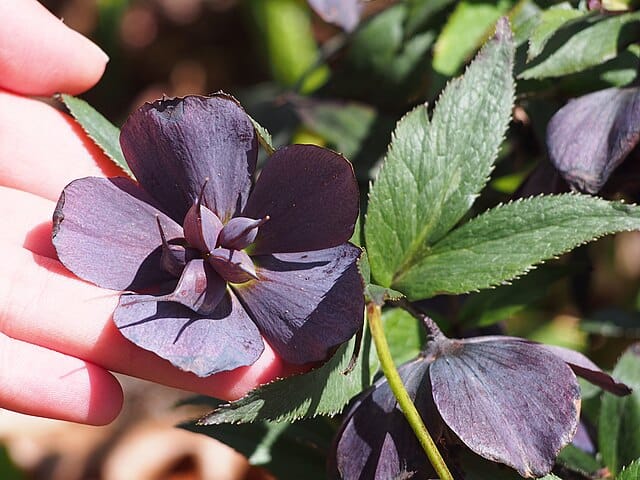
Lenten Rose is a beautiful shade perennial that heralds spring, often blooming even when snow still covers the ground. With its stunning, cup-shaped flowers available in a range of colors from deep purples to soft pastels, it can add joy and warmth to your garden in the early months.
Lenten Roses prefer well-drained soil, and they thrive in partial to full shade. Their striking blooms and evergreen foliage make them excellent garden companions, adding beauty and life to shaded areas all year round. This plant is a must-have for those who wish to welcome spring with open arms in their garden.
Leopard’s Bane (Doronicum orientale)
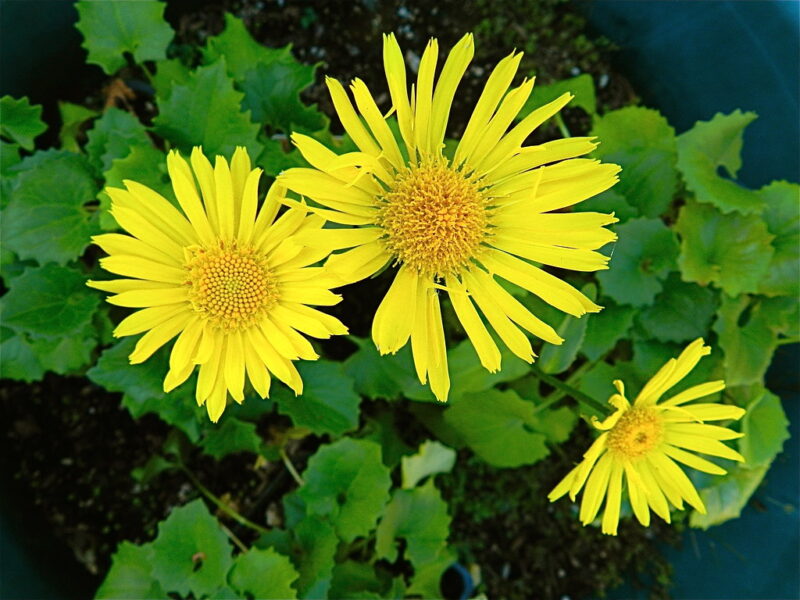
Leopard’s Bane is a cheerful perennial that brings warmth and brightness to shade gardens with vibrant yellow daisy-like flowers that bloom in early spring. This plant’s distinctive foliage resembles that of dandelions and provides a lush look from early in the season.
Preferring moist, well-drained soil, Leopard’s Bane thrives in partial shade. It’s an excellent choice for those looking to brighten up their shaded spots with fantastic blooms as winter transitions into spring. Its bright colors can lift your spirits and bring cheer to your outdoor space.
Lungwort (Pulmonaria)
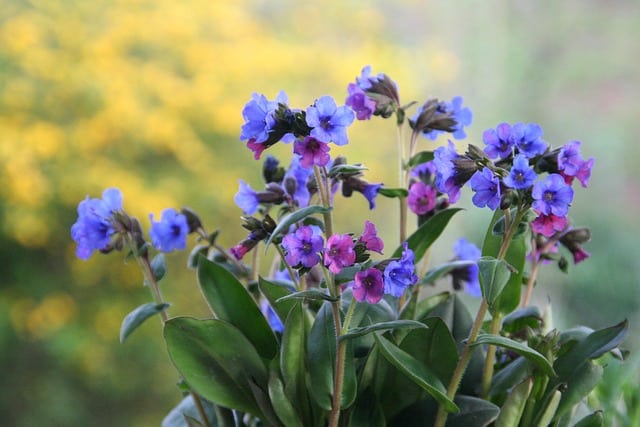
Lungwort is a versatile perennial loved for its attractive spotted foliage and early spring flowers that can range in color from blue to pink to white. This plant adds unique texture and color to shaded areas, blooming in a time when many other plants are still dormant.
Lungwort thrives in moist, well-drained soil and prefers partial to full shade, making it an easy addition to your garden. In addition to being gorgeous, Lungwort is also a reliable pollinator plant, helping to attract bees and butterflies, which can contribute to the overall health of your garden.
Indian Pink (Spigelia marilandica)
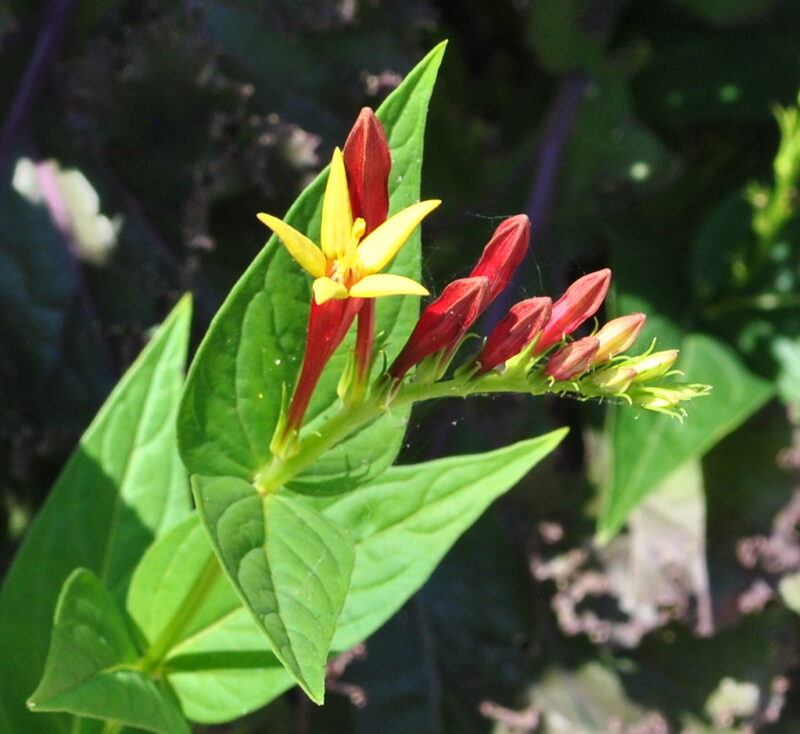
Indian Pink is a stunning native perennial that will add a splash of color to your shade garden. With its tubular red flowers that bloom in late spring to early summer, this plant can attract hummingbirds and other pollinators, making it a lively choice for your garden.
Preferring rich, moist soil and partial shade, Indian Pink is ideal for woodland gardens. Its striking appearance and ability to thrive in humidity make it one of the standout plants for Zone 6 shade gardens. Beginners will appreciate the beauty and resilience this perennial provides!
Sun King Aralia (Aralia cordata ‘Sun King’)
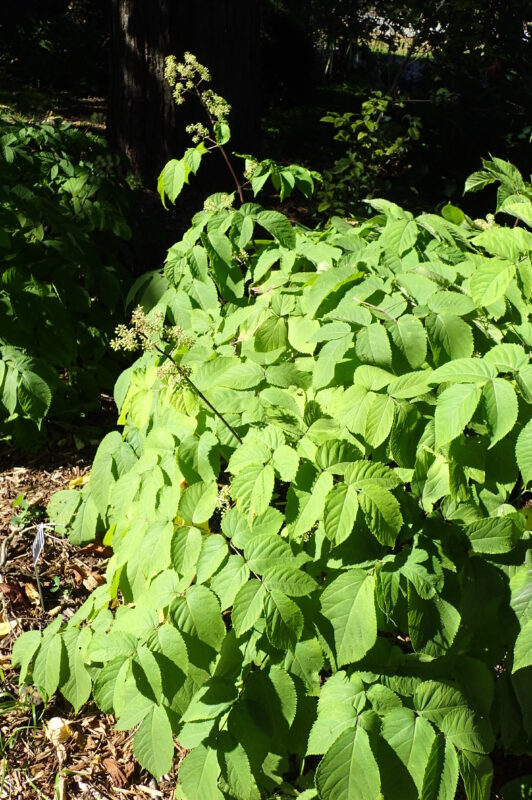
Sun King Aralia is a unique and eye-catching perennial that features bright, golden-yellow leaves that contently catch the eye, even in darker areas. This plant’s impressive foliage can add dimension and vibrance to any shade garden, making it a worthy focal point.
Sun King Aralia prefers rich, well-drained soil and thrives in part shade to full shade. Once established, it requires minimal care, making it perfect for any gardening novice who desires a stunning plant without the burden of constant maintenance.
Wind Flower (Anemone nemorosa)
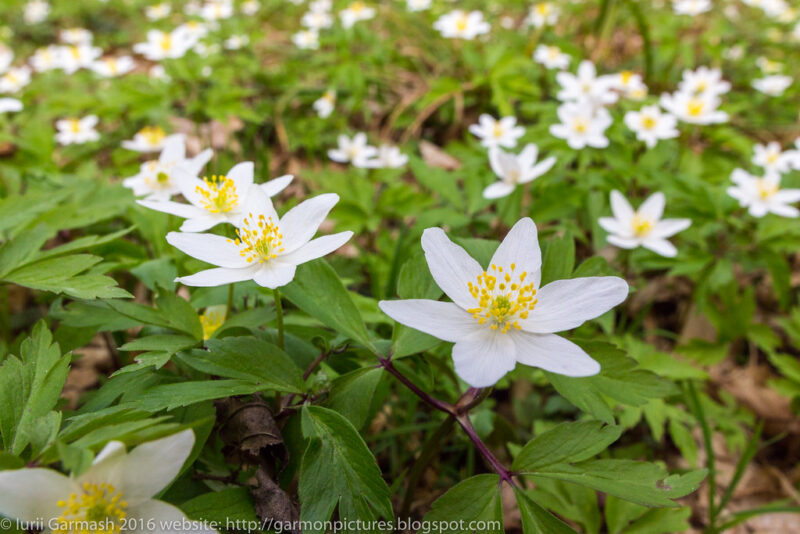
Wind Flower, also known as wood anemone, is a lovely perennial that produces delicate white or pink flowers in early spring, often carpeting the ground in naturalized settings. This plant is perfect for creating a serene feeling in the shade garden and returns each spring with lovely, fresh blooms.
Preferring rich, moist soil and partial shade, Wind Flowers can quickly establish themselves in your garden, creating a breathtaking display as they bloom. Their natural look can lend a touch of wildness to your design, making them an enchanting addition to your outdoor space.


